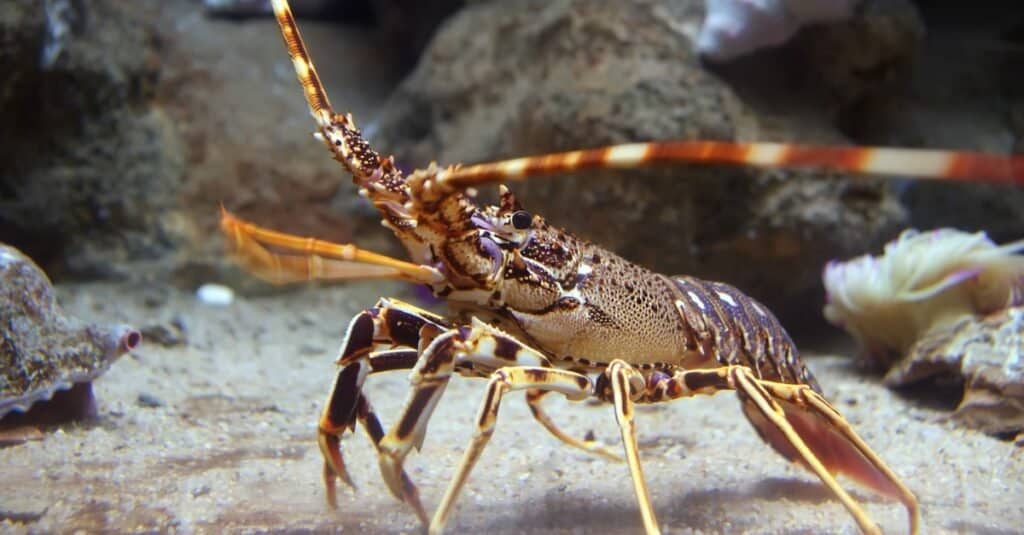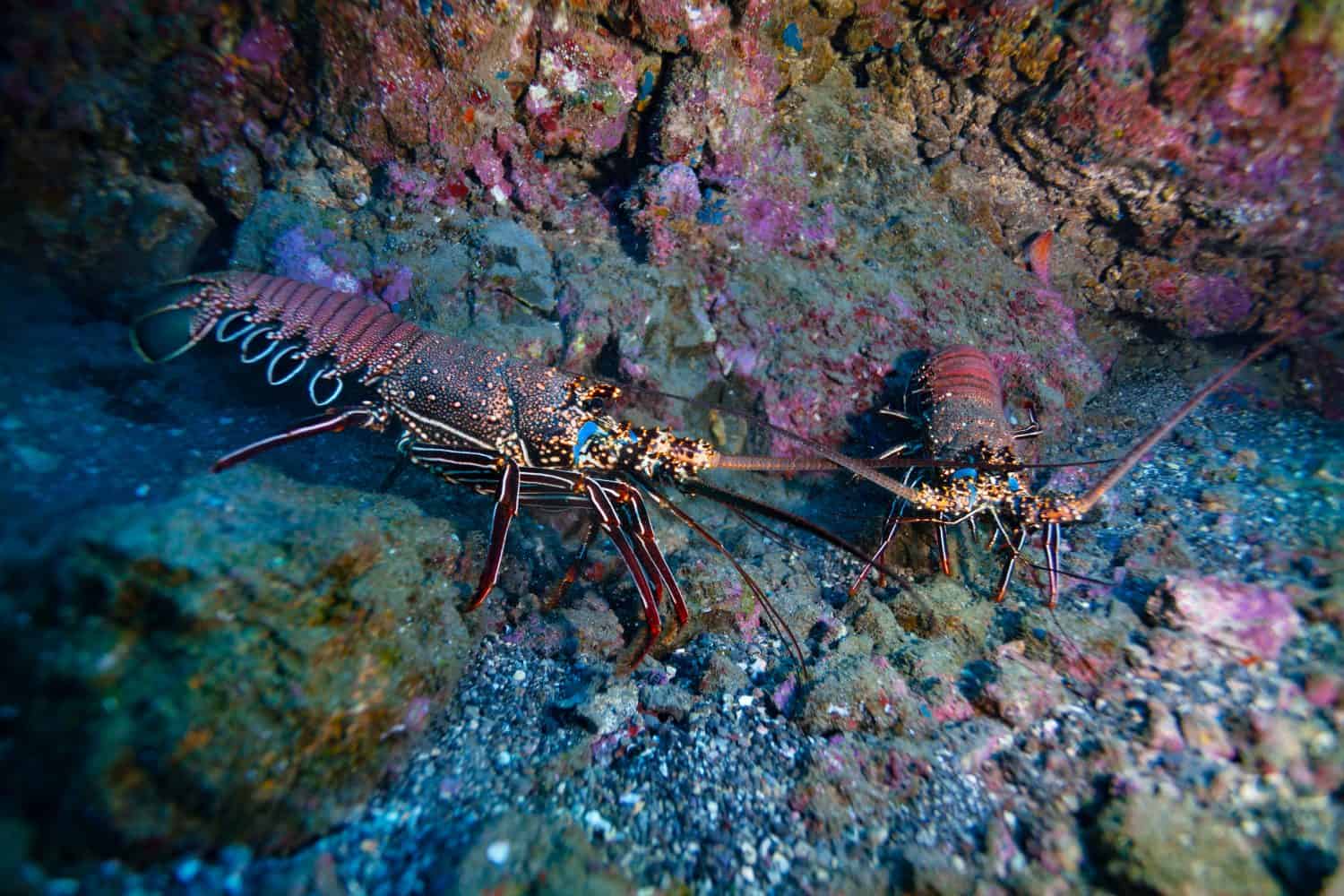They molt, have giant claws, can regenerate their limbs, and eat each other. Lobsters are little weirdos of the sea. But did you know they also communicate by spraying urine at each other? Yep, these curious marine crustaceans send out bursts of pee to communicate important messages when they’re feeling chatty.
This guide will delve into how lobsters communicate, urine spraying, and more. Read on to learn more!
How Lobsters Communicate: Chemical Signaling
By spraying urine at each other, lobsters send critical chemical messages via pheromones regarding reproductive status and territorial claims. Lobsters have two urinary bladders located on either side of their head. These bladders send urine through the opening of the nozzle-like nephropore rosette glands.
Incredibly, they can spray urine up to seven times the length of their body across the water. They also use their feathery-like gills at the front of their exoskeleton to disseminate the urine into the water current.
You might be wondering why lobsters adopted urine nozzles on their face everywhere. From the perspective of the lobster’s evolution and behavior, it makes sense. All of their defensive structures are positioned at the front of their body. When entering their shelters, lobsters back into them, displaying their defensive structures- antennae for spiny lobsters and antennae and claws for clawed lobsters- to prevent a surprise attack. By positioning the urine nozzles at the front of their body, they can also send urine signals out the front of their shelter without turning around. If a lobster challenges another while backing into their shelter, they can immediately begin spraying urine as part of agonistic displaying.

Urine spraying is a primary form of pheromone signaling between lobsters.
©VLADJ55/Shutterstock.com
Urine Signaling for Reproduction
When a female lobster is ready to reproduce, she will spray pheromone-filled urine at her mate of choice. Typically, this occurs at the entrance of the male lobster’s shelter. The male lobster’s brain then interprets messages of the reproductive pheromones in the urine to determine the female’s receptivity. The pair will often shack up together for up to two weeks in the male lobster’s den. During this time, the female will consistently spray urine pheromones out of the shelter to warn away competing females.
Urine Signaling for Territorial Claims
When two male lobsters compete for territory or mating access, they spray urine at each other. The pheromones in this urine are part of the agonistic display of the lobsters. One study found that the lobster who sprays urine more frequently at the beginning of competition tends to win a territorial claim.
These urine battles may prevent the frequency of physical conflict in which male lobsters will crush each other’s claws. Instead, a less strong or confident lobster may consent to the aggressive pheromones of the competitor before a physical conflict even begins. Finally, research suggests that the loser of the urine battle may be able to remember the unique scent of the winner’s pheromones. They then avoid future competition with the lobster attached to that scent.
How Lobsters Communicate: Acoustic Signaling
While urine spraying is a primary method of communication for lobsters, they also appear to communicate intraspecifically with acoustic signaling. In the American lobster (Homarus americanus), tiny sensory hairs, called hair fans, cover the exoskeleton. Receptors at the base of the hair fans allow the lobster to perceive the particle motion of low-frequency sound.
Lobsters make buzzing noises when stressed by contracting muscles in their head, which vibrate throughout the lobster’s exoskeleton and send particle waves through the water. In some species, such as the European lobster (Homarus gammarus), these buzzing sounds may function as both anti-predation attempts and agonistic signaling between individuals during territorial displays. In a 2020 study on agonistic encounters between male European lobsters, researchers found that over 95% of buzzing occurred after the resolution of an initial aggressive encounter in which a dominating individual was established. Most of the buzzing emanated from the acquiescing individual, indicating the vibrations may be a de-escalatory attempt to avoid additional confrontations.
How Lobsters Communicate: Body Language
Lobsters tend to be territorial animals and thus display a wide range of body positions to indicate territorial behavior, willingness to fight or surrender to a stronger individual. Clawed lobsters employ both their antennae and claws during displays and fighting, while the clawless spiny lobsters fight with their antennae. When lobsters compete, a range of aggressive posturing can occur, including the following:
- Antenna pointing
- Antenna whipping
- Claw lunging
- Claw snapping
- Claw scissoring
- Claw opening
- Wide spreading of claws
- Standing high on the tips of walking legs
- Circling opponent

Highly territorial, lobsters can display a range of aggressive posturing.
©Sergey Novikov/Shutterstock.com
The photo featured at the top of this post is © Gilmanshin/Shutterstock.com
Thank you for reading! Have some feedback for us? Contact the AZ Animals editorial team.







